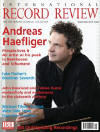Texte paru dans: / Appeared in:
*

International Record Review - (09//2014)
Pour
s'abonner / Subscription information
Fuga Libera
FUG718

Code-barres / Barcode
: 5400439007185 (ID443)
Consultez toutes les évaluations recensées pour ce cd
~~~~ Reach all the evaluations located for this CD

In 1604 John Dowland published an extraordinary collection of consort music entitled Lachrimae or Seaven Teares. It consisted of seven pavans all starting with the theme from Dowland's most famous lute composition, Lachrimae, which he also turned into the song Flow my tears; supplemented by another 14 works in various moods. All the pieces are in five parts and are 'set forth for the lute, viols, or violons'.
The Lachrimae cycle has become the object of much analysis and perhaps some projection. Anthony Rooley, Dowland's greatest living champion, is interested in the neo‑platonic speculations of various Renaissance writers such as the Florentine Marsilio Ficinio. As much of their writing borders on the occult, I hesitate to call what they wrote 'philosophy'. These teachings were undoubtedly influential among English intellectuals and artists for a time and Rooley argues that Dowland was among the adepts ‑ as shown above all in his Lachrimae pavans. Peter Holman's interpretation of the hidden allegories within the cycle draws on less esoteric material: the Elizabethan cult of melancholy, as exemplified most famously in Burton's Anatomy of Melancholy. David Pinto believes Dowland had closer links to the English recusant underground than hitherto known. He sees the publication, dedicated to James I's Catholic‑inclined consort Queen Anne of Denmark, as a coded spiritual testament.
In his detailed analysis of the cycle, the Danish scholar Peter Hauge suggests that number symbolism could be a partial key to the works. He also thinks it likely that the composer had originally intended to dedicate the work to Queen Elizabeth and merely substituted Anne when she died. Ludwig Loren's doctoral thesis on the cultural history of the English viol consort does not attempt to 'decode' the Lachrimae publication, but situates it in a tradition of instrumental music that had connections with the recusant community and also suggests that it had in some sense a 'liturgical' flavour and, implausibly to my mind, exemplifies an early modern conception of male 'homosociality' and homoeroticism. Loren also points out that, for all our easy talk of Elizabethans and melancholy, Protestant teaching of the time deprecated grief and mourning for the dead, in particular, as a bit too Romish.
This recording nods at Holman's work, but it is Rooley's theories and personal advocacy for the composer that undoubtedly inspire the members of the Hathor Consort (which not coincidentally I am sure takes its name from the Egyptian goddess of, among many other things, the sky, beauty, motherhood and music). They embrace the Renaissance belief that '... music [is] a powerful means of depicting and generating emotions, or "passions"'. This is really the key to their performances: at least in the seven Lachrimae pavans themselves: the musicians' task is to convey relentless, obsessive grief through music of extraordinary intellectual concentration. This music makes great demands on both the hearts and minds of musicians and listeners. Performers must navigate between. the Scylla of being simply boringly morose and Charybdis of a flashier, almost Baroque, style of melancholy. Not all recordings make the journey successfully.
The Dowland Consort's dour recording is an example of the former, while the eccentric
recordings by Reinhard Goebel's Musica Antiqua Köln (which does not even include a lute!) and the Norwegian Baroque Orchestra exemplify the latter. The members of the Hathor Consort get the balance exactly right. Playing on treble, tenor and bass viols, a violone and a lute, their dark, burnished hues are suitably sombre; but there is so much fascinating interplay and, to those who know the works well, a myriad of small but telling interpretative details. Their phrasing from the opening statement of the Lachrimae theme onwards throughout the cycle is subtly articulated in a way that seems steeped in the art of rhetoric and gentle persuasion. There is, of course, much more scope for display and bravura playing in the remaining 14 consort pieces. Listen, for example, to their exuberant yet indignant performance of 'The Earl of Essex Galliard', which is based on the Earl's petulant poem 'Can she excuse my wrongs'; or to the darting lines of 'M. Buckton his Galiard' (modelled on Lassus's evergreen Susanne un jour). The collection ends as it begins: with melancholy and the composer's punning but very serious 'Semper Dowland semper Dolens'. Using decidedly slow tempos, the Hathor Consort draws one completely into this complex, lengthy and mercurial piece. I had to play it through twice more before reluctantly moving on.
The recording was made in an
historic Church in Belgium. The ambience captures well the buzzing sound of
the viols, but somewhat at the expense of the lute, which is quite recessed.
This, however, is my only criticism of what is now surely the finest
recording of Dowland's instrumental masterpiece.
Fermer la fenêtre/Close window
Cliquez l'un ou l'autre
bouton pour découvrir bien d'autres critiques de CD
Click either button for many other reviews


